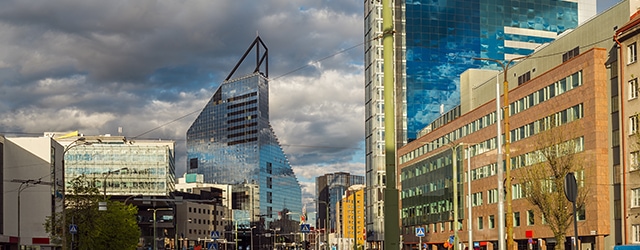Tiny Estonia’s focus on high-end value has brought success in attracting foreign investment.

|
ESTONIA: VITAL STATISTICS |
|---|
|
Location: Eastern Europe |
|
Neighbors: Latvia, Sweden, Finland, Russia |
|
Capital city: Tallinn |
|
Population (2018): 1,306,176 |
|
Official language: Estonian |
|
GDP per capita (2017): US$19,840 |
|
GDP growth (2017): 4.9% |
|
Inflation (2017): 3.7% |
|
Currency: Euro |
|
Investment promotion agency: Estonian Investment Agency |
|
Investment incentives available? Tax-free treatment of reinvested profits |
|
Ease of Doing Business rank (2017): 12 |
|
Corruption Perceptions Index rank (2017): 21 |
|
Political risks: Russia viewed as serious threat |
|
Security risks: Petty crime in parts of Tallinn, including reports of drink tampering to assist robberies; small risk of terrorism |
|
PROS |
|---|
|
Strong Western orientation |
|
Belief in need for FDI |
|
“National” treatment of foreign companies |
|
CONS |
|---|
|
Accusations of money laundering have led to closures of financial institutions |
|
Rising labor costs |
|
Insufficient land connections with rest of Europe |
|
Sources: Eesti Pank (Estonian Central Bank), Estonian Investment Agency, International Monetary Fund, International Security and Estonia 2018, Estonian Foreign Intelligence Service; Reutres; Transparency International; UK government Foreign Travel Advice; US State Department; The Washington Post; World Bank; World Population Review |
|
For more information, check out Global Finance‘s Estonia Economic Report data page. |
Since the disintegration of the Soviet Union in 1991, its former member republics have progressed at different speeds in shifting from communist-style command economies to capitalist-oriented market economies.
Estonia embraced the shift through memberships in the UN (1991), WTO (1999), NATO and the EU (2004). It became a member of the OECD in 2010 and joined the eurozone a year later.
History helped ease that market evolution, according to Allan Selirand, director of the Estonian Investment Agency, “Estonia never had oligarchs because the state-owned companies were very few,” he explains in an interview from Tallinn.
Estonia’s net inflows of FDI increased from $416.2 million in 2000, according to World Bank figures, to $853 million in 2017 (despite some dramatic movement in between due to recession and recovery). In that time, the focus of its Foreign Direct Investment efforts has also changed. Instead of competing with former Soviet bloc countries like Lithuania and Romania, Estonia leverages its skilled workforce and advanced e-services, rather than lower labor costs, to go head-to-head with England and Germany. The country’s track record in IT development includes Skype, which was funded from Sweden and Denmark but developed in Estonia. Estonia ranks 21st in the Corruption Perceptions index, ahead of all other former Soviet republics; it ranks 12th out of 190 countries in the Ease of Doing Business index, ahead of all except Georgia. Estonian law allows for financing opportunities through a special vehicle called a limited partnership fund (LPF), which is not considered a “taxpayer” or “resident” for tax purposes. Investors in an LPF share the proceeds in proportion to their stakes in the fund, usually on a tax-free basis.
Such policies, along with Estonia’s commitment to IT and its near-total digitization of government processes, have attracted companies such as Microsoft, CGI Group and Fujitsu. All have established operations in Estonia. In May, Daimler joined a $175 million investment in Taxify, a ride-sharing app set to rival Uber. Selirand is currently in negotiations with several European banks to locate product-development centers in Estonia and leverage Estonia’s IT capabilities to attract investment.
Natural resources are another area in which Estonia would like to attract investment. “We are definitely looking for companies who want to [develop] timber products. Fifty-one percent of the country is covered with timber,” Selirand says. That also means opportunities in related sectors such as services and furniture manufacturing.
However, investors may face challenges currently affecting the business scene, including rising labor costs and a shortage of skilled IT professionals. The shortage is becoming so acute that Estonia is recruiting professionals from the UK and elsewhere, with ads carrying assurances that fluency in Estonian is not necessary. By some estimates, the shortage could climb to 37,000 by 2020. The Estonian Unemployment Insurance Fund also projects shortages of truck drivers and a wide range of service workers. Moreover, fear of Russia’s economic, as well as military might, overhangs the political scene so acutely that Estonia, along with other Baltic states, plans to break itsdependence on Russian power by 2025.



